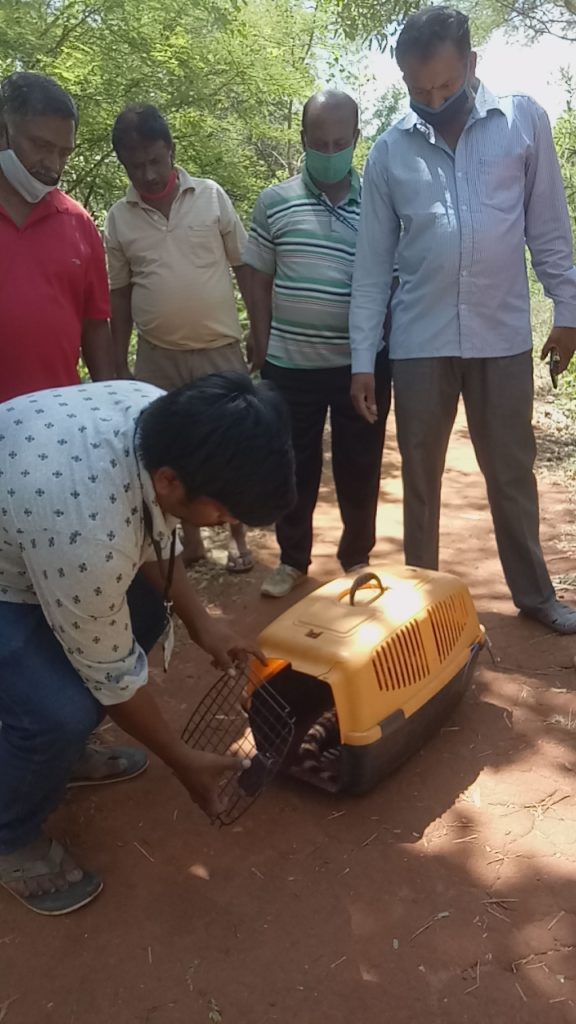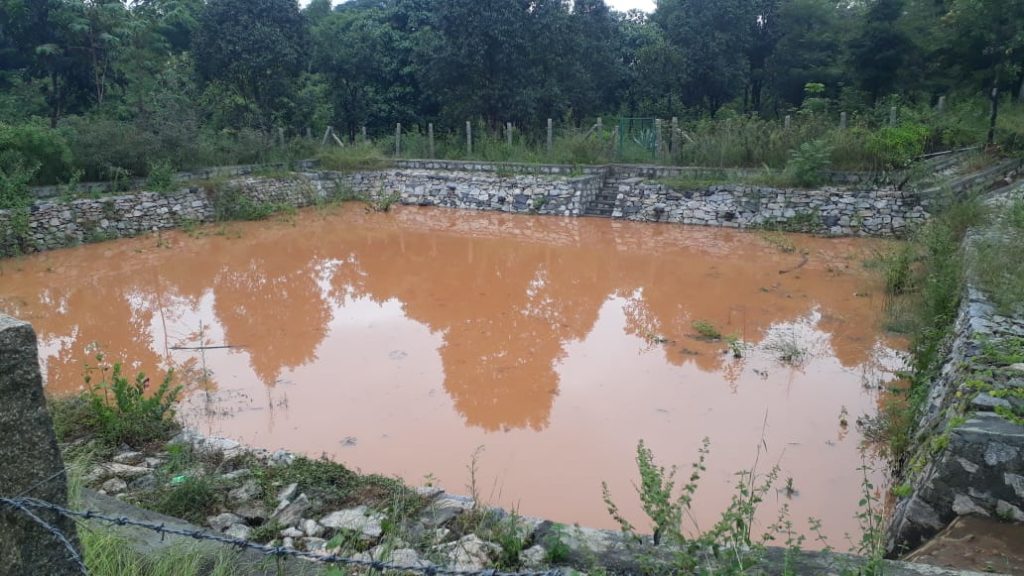By GreenMinute News
The IT hub of Bengaluru saw the rescue of two rare and endangered wildlife species – Small Indian Civet and an Egyptian Vulture.
If the Small Indian Civet was rescued from the Bangalore University Biodiversity Park area, the Egyptian Vulture was found in an apartment in Whitefield area of the city.
In this incident, a juvenile Egyptian Vulture or the White Scavenger Vulture was found by the residents in the third-floor balcony of Prestige Shantiniketan apartment in the Whitefield area, informed Rajesh Kumar M, wildlife volunteer with the Bruhat Bengaluru Mahanagar Palike (BBMP) Forest Cell Wildlife Rescue Team.
Rescuing the raptor, he said it may be just a month old and may have tried to take its first flight out of curiosity in the absence of its parents. Usually, they nest at buildings, cliffs or large trees and can be seen taking swooping dives. In fact, 8 years back, an Egyptian vulture was rescued from M G Road.
SMALL INDIAN CIVET
Apart from this, on Tuesday afternoon, a Small Indian Civet was rescued in Bangalore University Biodiversity Park. The BBMP Forest Cell Rescue team went to the University which is a biodiversity rich area and found this injured Schedule-1 species. The animal had injuries on its head.

Speaking to Green Minute, Bengaluru (Urban) honorary wildlife warden A Prasanna Kumar said, “We received information from a walker in the University area at 12.30 noon that a mongoose had been injured. However, when we reached the spot, we found a Small Indian Civet that had injuries on its head. Presently, it is being treated and it will be released after it recovers. In the city, we have very less numbers of civets.”
The Small Indian Civet is a Schedule-2 (part-1) species under the Wildlife Protection Act and has been listed as Least Concern in the IUCN Red List. It is found in Bangalore University and GKVK campus and is hardly seen nowadays. Their numbers have been declining in the city due to habitat destruction.
Prasanna Kumar added, “Both the Small Indian Civet and Egyptian Vulture will be released after treatment and observations at the Wildlife Hospital in Kengeri. The condition of the vulture is good but it will be kept under observation and released in the same place after a while.”
The sightings of Egyptian vultures are good in Hessarghatta, Bannerghatta, Turahalli, Arekere, Mysore Road, Magadi Road (Ramaswamy Betta) and other outer areas of the city. Every year, juveniles are sighted during the months of April-May in Bengaluru. However, this smallest vulture species is endangered and declining worldwide due to poisoning, poaching, electrocution and human disturbance.

The Small Indian Civet are primarily nocturnal, terrestrial and insectivorous. Sleeping in burrows and hollow logs, they can climb well. However, in a city space, they occupy the gutters or dark space, and people often mistake them for mongoose. Thy feed on mice, rats, snakes, birds and even found consuming poultry birds. The sightings of both these species in a city that is fast losing its green cover and wildlife population brings cheer at a time when the conservationists ponder over the reasons for the pandemic.
Vijay Nishanth, Urban Conservationist and Biodiversity Board member adds, “This shows the rich biodiversity of Bengaluru and how there is every need to protect the 650-acre Biodiversity Park of Bangalore University which is home to a variety of flora and fauna due to the efforts of scientists, biodiversity experts, environmentalists and activists. The government has to take a call on the setting up of some new yoga and education centres in this verdant forest with many wetlands and so, we have to strive to save these Carbon Sinks to tackle the issue of Climate Emergency.”

